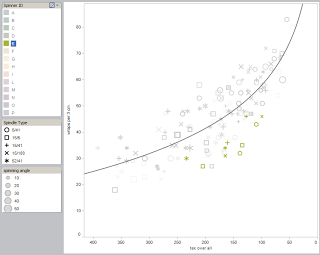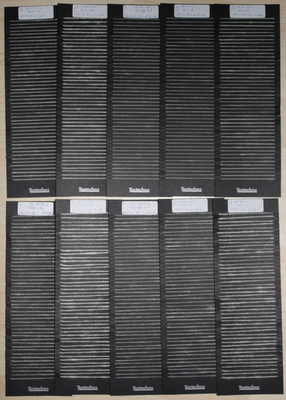Somehow, the time this year flies like crazy - I just realised that it is almost Ascension Day. There was a bunch of things that I had planned to finish before the long weekend that this induces... but I will probably not manage all of them.
That greenish blackboard is looking a bit less green and more black today, thanks to a bunch of things to do finished since Friday (and thus vanished from the board). On the list for today is packing a bunch of files and sending them off: the article about the spinning experiment results is finished, and I'll give it a last once-over before getting it to its destination.
Associated with this, I am planning to put all the experiment data online so that everybody interested can download the results and do additional research, develop theories, or - in case of the spinners - see how their spinning looks on a survey card. I have to go over the database for this and make sure that everything is in there that should be in and that nothing is in there that shouldn't, and that will probably need another few days. You will hear about it on this blog, of course.
Spinning experiment work, here I come again!
That greenish blackboard is looking a bit less green and more black today, thanks to a bunch of things to do finished since Friday (and thus vanished from the board). On the list for today is packing a bunch of files and sending them off: the article about the spinning experiment results is finished, and I'll give it a last once-over before getting it to its destination.
Associated with this, I am planning to put all the experiment data online so that everybody interested can download the results and do additional research, develop theories, or - in case of the spinners - see how their spinning looks on a survey card. I have to go over the database for this and make sure that everything is in there that should be in and that nothing is in there that shouldn't, and that will probably need another few days. You will hear about it on this blog, of course.
Spinning experiment work, here I come again!






